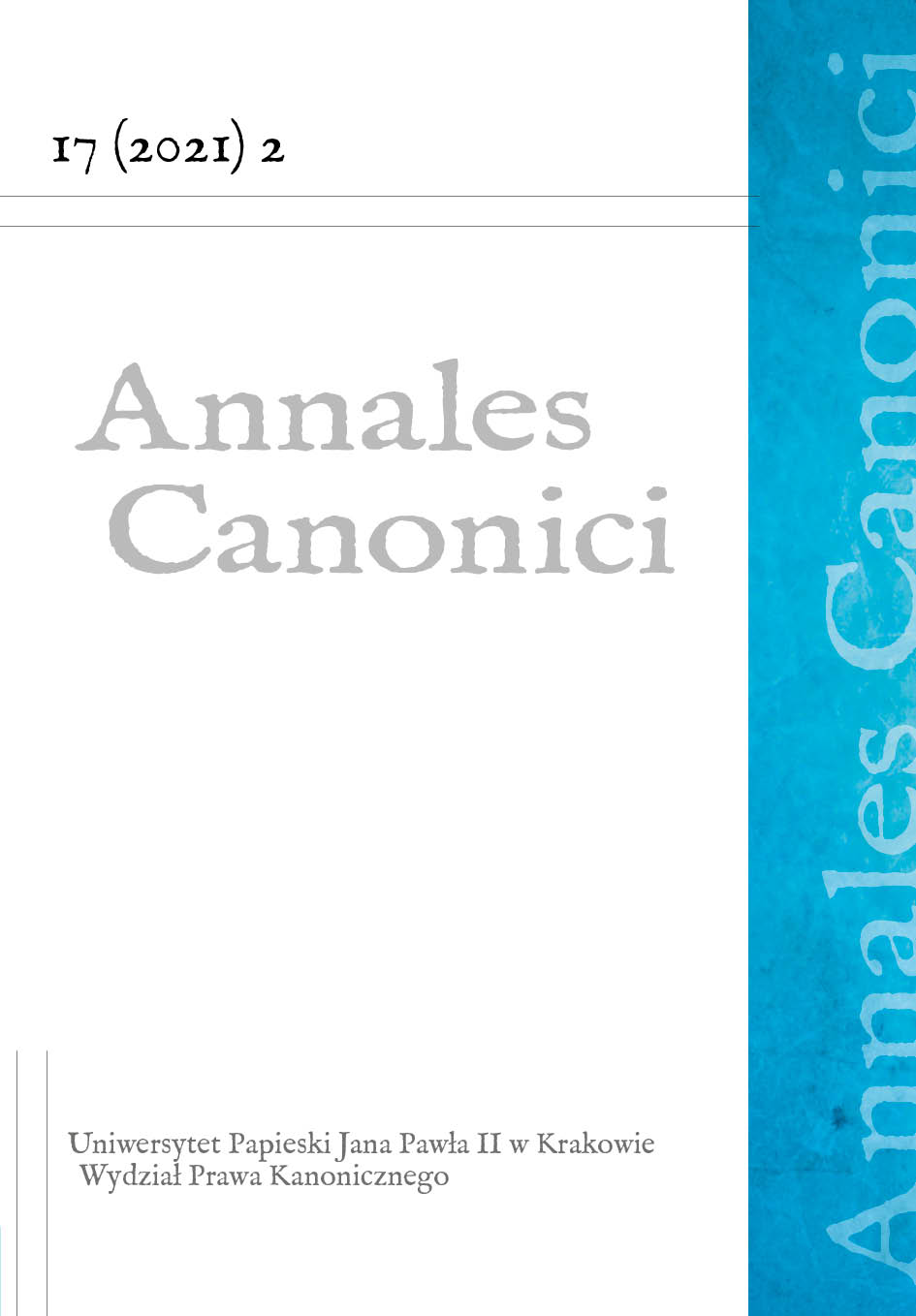Matrimonial consent in the context of adequate anthropology of John Paul II as a perspective to the relationship between human being and the phenomenon of law
DOI:
https://doi.org/10.15633/acan.4163Keywords:
matrimonial consent, theology of the body, phenomenon of lawAbstract
Since true marriage is the primary legal relationship, exploring its anthropological nature provides a tool for better understanding the phenomenon of law. John Paul II’s theology of the body is an invaluable source for an adequate anthropology describing the relationship between a man and a woman. The aim of this paper is to analyze some fundamental aspects of the marriage consensus in the light of the premises provided by this anthropology. The conclusions will be used to show the human right to be a subject of law in the perspective of the made separation between the law seen as a thing due (res iusta) and the subjective law (facultas). The meaning of gender difference will be used to show marriage as a paradigmatic system of law.
References
Casanova C.A., Ghillermo de Ockham y el origen de la concepción nominalista de los derechos subjetivos, „Cuariensia” 11 (2016), s. 113–140.
Codex Iuris Canonici auctoritate Ioannis Pauli PP. II promulgatus, 25.01.1983, „Acta Apostolicae Sedis” 75 (1983) pars 2, s. 1–317; tekst łacińsko-polski: Kodeks prawa kanonicznego, przekład zatwierdzony przez Konferencję Episkopatu Polski, Poznań 1984.
Glendon M.A., Rights talk, New York 1991.
Glendon M.A., W poszukiwaniu „osób” w prawie, „First things. Edycja polska” 4 (2007), s. 81–87.
Hervada J., Lecciones propedéuticas de filosofía del derecho, Pamplona 2000.
Jan Paweł II, Mężczyzną i niewiastą stworzył ich. Chrystus odwołuje się do „początku”, w: Mężczyzną i niewiastą stworzył ich. Chrystus odwołuje się do „początku”. O Jana Pawła II teologii ciała, red. T. Styczeń, Lublin 1998, s. 15–82.
Joannes Paulus PP. II, Allocutio ad Romanae Rotae Auditores simul cum officialibus et advocatis coram admissos, anno forensi ineunte, 25.01.1988, „Acta Apostolicae Sedis” 80 (1988), s. 1178–1185; tekst polski: Jan Paweł II, Dzieła zebrane, t. 5, Kraków 2007, s. 668–673.
Morsink J., The Universal Declaration of Human Rights, Philadelphia 1999.
Van Duffel S., Robinson J., Ockham’s Theory of Natural Rights, http://individual.utoronto.ca/jwrobinson/articles/vanduffel-robinson_ockhams-theory-of-natural-rights.pdf (2.07.2021).
Vildarich P.-J., El amor conyugal. Entre la vida y la muerte. Lección inaugural dle curso academico 2003–04, Pamplona 2003.
Viladrich P.-J., El consentimiento matrimonial. Técnicas de califiación y exégesis de las causas canónicas de nulidad (cc. 1095 a 1107 CIC), Pamplona 1998.
Viladrich P.-J., La familia „soberana”, „Ius Canonicum” 68 (1994), s. 427–440.
Weigel G., Świadek nadziei. Biografia papieża Jana Pawła II, Kraków 2006.
Wojtyła K., Osoba i czyn, w: „Osoba i czyn” oraz inne studia antropologiczne, Lublin 1994.
Wójcik A., Interpretacja wolności religijnej w stosowaniu konkordatowego prawa małżeńskiego w Hiszpanii. Kilka ważniejszych kontrowersji, „Annales Canonici” 4 (2008), s. 255–270.
Downloads
Published
Issue
Section
License
The author declares that he owns the copyright to the work (article) and that it is not limited in the scope covered by the above declaration and that the work (article) is an original work and does not infringe the copyright of other persons.
The author allows the Pontifical University of John Paul II in Krakow to use the paper free of charge, non-exclusive and unlimited in time by, i.e.:
– keeping in records and reproduction of the copies of the work using printing, reprography, magnetic recording and digital technology;
– trade in the original or copies on which the work has been recorded (introduction to the market, lending or rental of the original or copies, public exhibition, display, as well as making the work available to the public in such a way that everyone can have access to it in a place and at a time chosen by them);
– inclusion of the work in a collective work;
– granting by the Pontifical University of John Paul II in Krakow a Creative Commons Sub-licence Authorship Recognition-Non-commercial Use-No Subsidiaries 3.0 Poland
The Pontifical University of John Paul II in Krakow makes the work available on the Magazine Platform of the university under the Creative Commons Attribution-Non-commercial Use-No Subsidiary Works 3.0 Poland license.
Thus, it entitles all interested parties to use the work under the following conditions:
- the author and the title of the work will be given,
- the place of publication (journal title and internet address of the originally published work) will be indicated,
- the work will be distributed in a non-commercial manner,
- no dependent works will be created.

